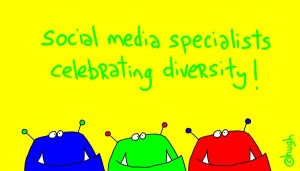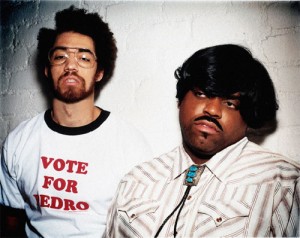Blue Ocean?
Both Ad Age and Huffington Post published the below essay I wrote for the forthcoming book Project 100: Marketing in the Social Media Era.
The idea that online is ‘colorblind’ is now thankfully being replaced be a more intelligent discourse on the topic. No doubt, you can see more about it here at Desedo, cause it’s the world we live in.
Truth In Advertising? New Media + Multicultural
[T]he proliferation of media voices and sources enabled by the internet has allowed a more nuanced and less gangster voice of young black america to emerge, untempered by market concerns and sensationalism. Because of social media’s democratized communication tools, we are now seeing a more accurate depiction of black america. Mainly because that media is actually being created by, ahem, black people.
-Raafi Rivero, Black Nerds
The authorship space of social media has fostered a cross media rise of black skaters, black rockers, black gamers and a wildly successful new strain of nerdy hip-hop. (Kanye West, Gnarls Barkley, N.E.R.D., Cool Kids, etc…) These diverse depictions and distributions of black life run counter to what we often see in mass media.
And that’s one case study. Many other groups within America have used social media to this effect : GLBT, American-Muslims, Asian-Americans, etc… Increasingly more content is made + moved by these groups, counterbalancing the content about these groups as seen in mass media. Dialogue is supplanting monologue.
As a society, we are all richer for it.
So. What is the upside for marketers within this diversifying social media space? It is a chance to engage oft ignored multicultural markets. Money is still on the table. And in our current economic state, brands are seeking “new” consumer groups.
My thinking is this:
1) Except for humor, traditional advertising is a risk-adverse platform. When brands aim to reach multicultural markets, most opt to play it safe with the tropes that Blacks value ‘soul’, Latinos love ‘family’, Asians are ‘sedulous’, etc… >>
2) Using narrow clichés are not just an affront to millions of consumers ; they are missed market opportunities. While brands may intuitively understand that a black guy can love both Jay-Z and The Beatles, this multiplicity is rare within traditional advertising. Brands try to engage multicultural consumers using too few points of narrative and emotional entry. >>
3) Social media is where this engagement strategy can begin to change for the better. Why? Because social media is built upon the truth of multiplicity. As Raafi notes above, one person can now use this space to identify himself as: a gamer + a skater + black + a man + a music lover + a photographer + more. As brands understand this truth, they will rethink the narrow content used to engage multicultural consumers. And given the online ability to reach niches at low cost, brands can actually put to use their knowledge of multiplicity – beginning new conversations with those consumers who’ve too long been writ as simply a clatch of soul claps and sombreros.



Comments:
This is spot on. A year ago I wrote a post putting out some of my concerns. It wasn’t just about what seemed to be a lack of minorities in online marketing, it was that not many people noticed. Yet we were all saying that we were the future of advertising.
Here’s the post.
Here, here! Great post. The narrow approach to ethnic audience is passe. You would think The Obama example would enlighten a few.
Great post – I’m also writing for the Project 100, and this has been great inspiration as I muse over my piece.